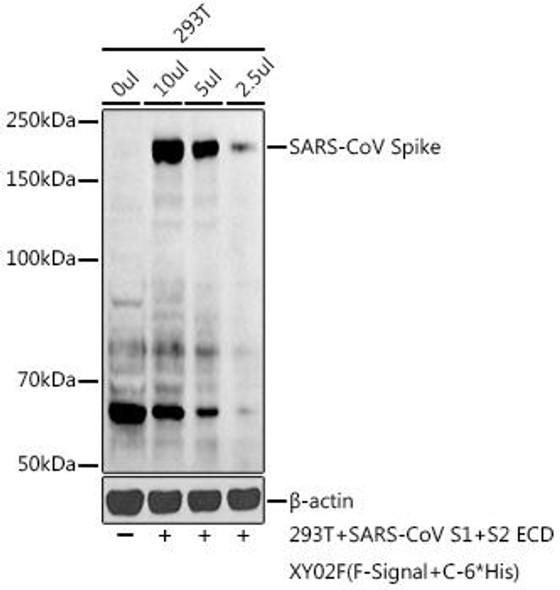CoV Spike Porcine, PTT1E11 (CPAB0415)
- SKU:
- CPAB0415
- Product Type:
- Antibody
- Antibody Type:
- Monoclonal Antibody
- Reactivity:
- Human
- Mouse
- Rat
- Host Species:
- Rabbit
- Isotype:
- IgG
Description
CoV Spike Porcine, PTT1E11 (CPAB0415)
The COV Spike Polyclonal Antibody (CPAB0415) is a specialized research tool designed for the detection and analysis of the spike protein of the Porcine Coronavirus strain PTT1E11. This polyclonal antibody, produced through immunization of rabbits, exhibits high reactivity towards Porcine Coronavirus samples and has been validated for use in various applications, including Western blotting. The spike protein of Porcine Coronavirus is a crucial component involved in viral entry and infection, making it a key target for antiviral research and vaccine development. By specifically binding to the spike protein, this antibody enables the precise detection and characterization of Porcine Coronavirus in different samples and cell types, facilitating studies in virology and infectious disease research.
Understanding the behavior and interaction of the spike protein of Porcine Coronavirus is essential for unraveling the mechanisms of viral pathogenesis and host response, aiding in the development of effective strategies for combating Porcine Coronavirus infections in veterinary and agricultural settings. The COV Spike Polyclonal Antibody is a valuable tool for advancing our knowledge of Porcine Coronavirus biology and for contributing to the development of control measures against this important viral pathogen.
| Product Name: | CoV Spike Porcine, PTT1E11 |
| Product Sku: | CPAB0415 |
| Size: | 50μg |
| Host Species: | |
| Immunogen: | The antibody was developed using purified porcine coronavirus clone PTT1E11(eptopoe not mapped). |
| Clone: | |
| Reactivity: | Viral |
| Applications: | ELISA |
| Purification Method: | |
| Isotype: | |
| Background: | SARS Coronavirus is an enveloped virus containing three outer structural proteins, namely the membrane (M), envelope (E), and spike (S) proteins. Spike (S)-glycoprotein of the virus interacts with a cellular receptor and mediates membrane fusion to allow viral entry into susceptible target cells. Accordingly, S-protein plays an important role in virus infection cycle and is the primary target of neutralizing antibodies. It has recently been shown that SARS (severe acute respiratory syndrome) is caused by a human coronavirus. Human coronaviruses are the major cause of upper respiratory tract illness, such as the common cold, in humans. Coronaviruses are positive-stranded RNA viruses, featuring the largest viral RNA genomes known to date (27-31 kb). The first step in coronavirus infection is binding of the viral spike protein, a 139-kDa protein, to certain receptors on host cells. The spike protein is the main surface antigen of the coronavirus. The glycosilated spike protein (as well as the nucleocapsid protein) can be detected in infected cell culture supernatants with antisera from SARS patients. |
| Synonyms: | |
| Storage Buffer: |







